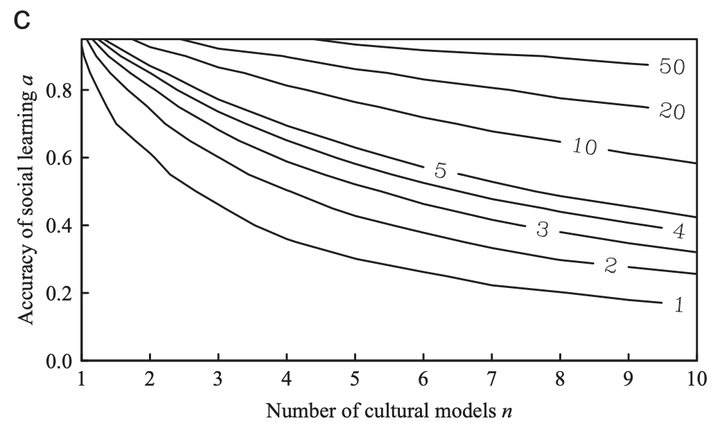From cultural traditions to cumulative culture: Parameterizing the differences between human and nonhuman culture

Abstract
Diverse species exhibit cultural traditions, i.e. population-specific profiles of socially learned traits, from songbird dialects to primate tool-use behaviours. However, only humans appear to possess cumulative culture, in which cultural traits increase in complexity over successive generations. Theoretically, it is currently unclear what factors give rise to these phenomena, and consequently why cultural traditions are found in several species but cumulative culture in only one. Here, we address this by constructing and analysing cultural evolutionary models of both phenomena that replicate empirically at testable levels of cultural variation and complexity in chimpanzees and humans. In our model of cultural traditions (Model 1), we find that realistic cultural variation between populations can be maintained even when individuals in different populations invent the same traits and migration between populations is frequent, and under a range of levels of social learning accuracy. This lends support to claims that putative cultural traditions are indeed cultural (rather than genetic) in origin, and suggests that cultural traditions should be widespread in species capable of social learning. Our model of cumulative culture (Model 2) indicates that both the accuracy of social learning and the number of cultural demonstrators interact to determine the complexity of a trait that can be maintained in a population. Combining these models (Model 3) creates two qualitatively distinct regimes in which there are either a few, simple traits, or many, complex traits. We suggest that these regimes correspond to nonhuman and human cultures, respectively. The rarity of cumulative culture in nature may result from this interaction between social learning accuracy and number of demonstrators.